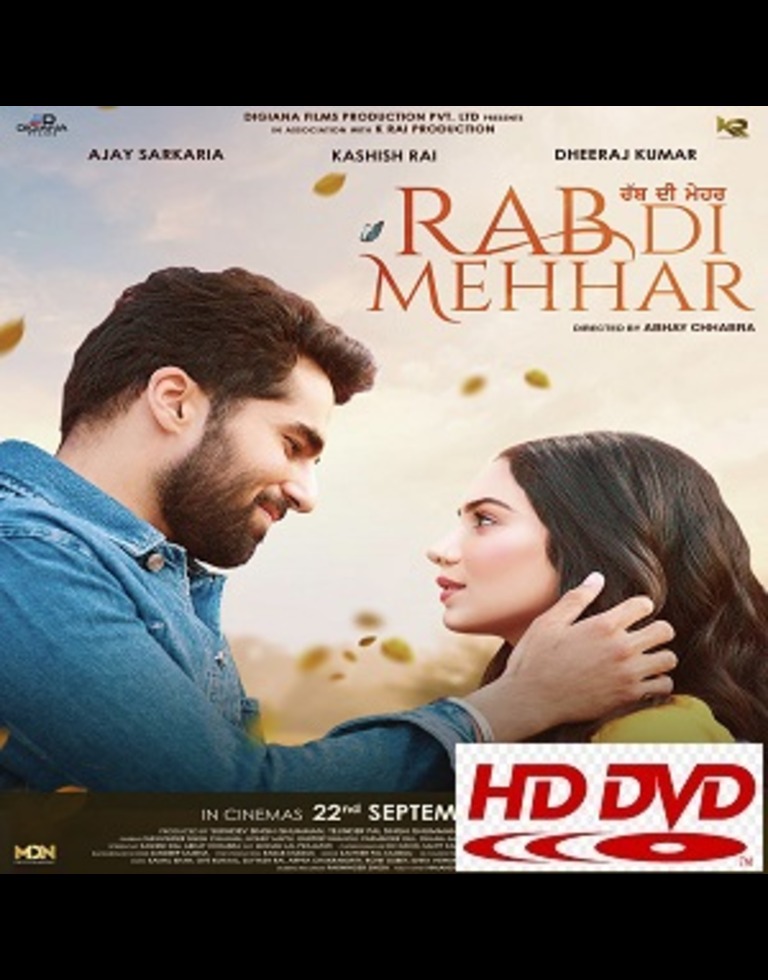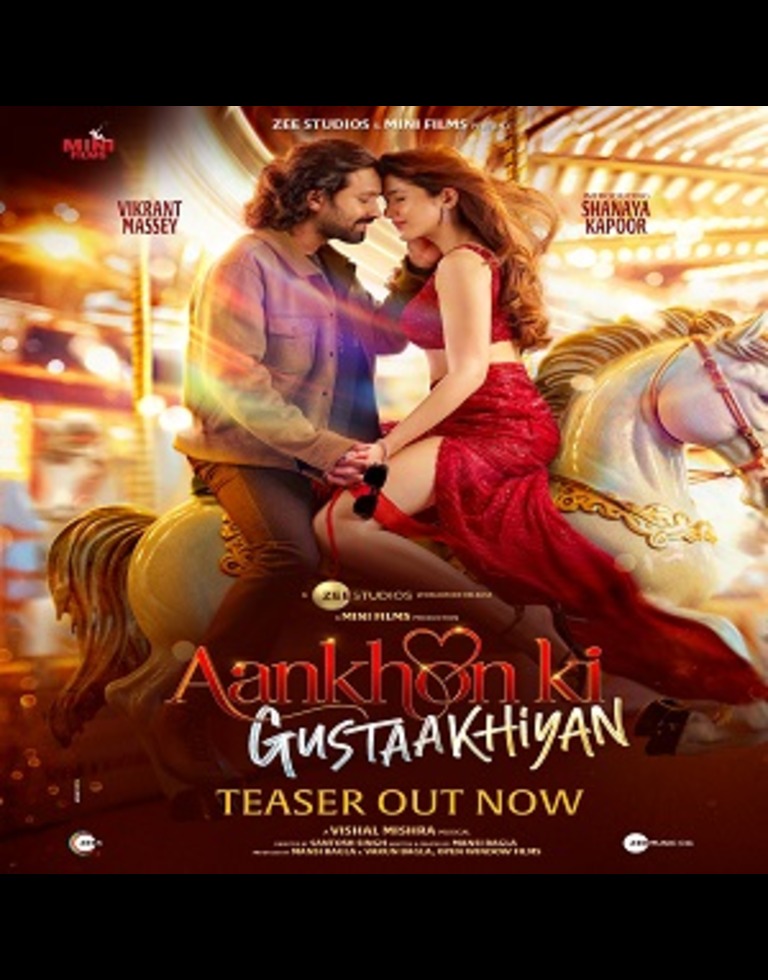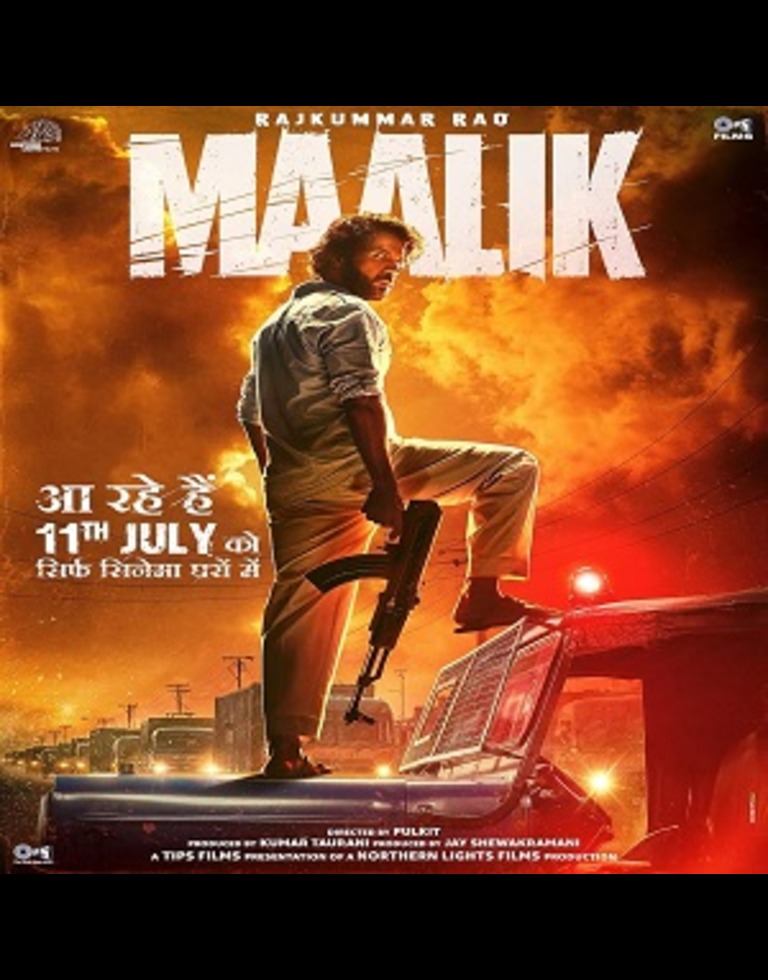
🎯 Premise & Story
Rab Di Mehhar centers on the life of Aman (played by Amandeep Sandhu), a devoted farmer and single father in rural Punjab, struggling to raise his two young daughters after his wife’s tragic death. When a severe drought hits the village, Aman’s only hope lies in his unwavering belief in divine mercy (“Mehhar”). He prays for rain and guidance but is forced to make tough moral choices to protect his family’s livelihood. Into this world enters Simran (Harleen Kaur), a schoolteacher whose modern ideas and empathy gently challenge Aman’s traditional mindset and slowly bring healing to his fractured home.
The film establishes its emotional stakes early—Aman’s daily toil, the girls’ tender bond with him, and the looming crisis brought by failing crops. While the general plot framework is familiar, the film earns moments of uniqueness through cultural rituals, ancestral storytelling, and the raw way grief is portrayed.
🧑🎭 Performances
Amandeep Sandhu delivers a heartfelt performance as Aman. His portrayal of a broken man hoping for hope carries weight: weathered expressions, restrained anger, and silent tears speak louder than his dialogue. He portrays both a stoic patriarch and a vulnerable human abalanceattheheartofthestorya balance at the heart of the story.
Harleen Kaur embodies Simran with quiet strength—her gentle intelligence and compassion bring warmth to every scene she shares with Aman and his daughters. She isn’t just a romantic interest; she becomes a catalyst for emotional recovery, using education and kindness.
Child actors playing Aman’s daughters, Mehak and Palak, are delightful. Their chemistry with Sandhu feels natural, and their innocence brings levity—whether in impromptu village games, bedtime prayers, or whispering questions about loss and God.
Supporting performers—like the stern village head (Jasdeep Singh), the jovial farmer neighbor (Kuldeep Dhillon), and the fraught shopkeeper—provide subtle texture, representing different community perspectives on faith, tradition, and modernity.
🎥 Direction & Screenplay
Director Rajveer Singh navigates a well-worn template—andy has father daughter—without falling into caricature. The screenplay is layered, beginning with crisis and moving toward gradual healing. Scenes build steadily: Aman’s desperate prayer under a tree, children inventing makeshift kites, heated confrontation with the bank manager, a village gathering under a shared canopy hoping for rain.
Dialogue is simple but sure. Village banter has warmth and authenticity, debates about faith versus planning are heartfelt, and the occasional Punjabi proverb is woven with wisdom. Dramatic beats—Aman’s breakdown after a failed loan, Simran’s tender scolding when he neglects the girls—feel earned rather than manipulative.
One memorable setpiece: the village fair. Floodlit tents, spinning rides, sari-clad women shivering, the girls dancing in lantern-lit circles. It represents community healing and a reaffirmation of life’s small joys amid hardship.
🛠️ Technical Craft
Cinematography by Arjan Gill paints Punjab in heartfelt hues. Gold-lit wheat fields, dusty dirt roads, and heavy monsoon skies contrast with bright farmer gatherings and festival sets. Close-up shots capture Aman’s internal tension, while long wide shots show his isolation on barren land.
Music & Score by Ravneet Chahal is understated and evocative. The score uses traditional folk instruments—dholak, harmonium, flute—to underscore emotional moments: a simple lullaby when children sleep, a crescendo when rain finally arrives, a meditative pad during Aman’s prayer montage. One folk song, “Naina Rehn De,” is used sparingly, but its raw melody lingers.
Production Design & Costumes are grounded and lived-in: Aman’s faded kurta, Simran’s modest salwar kameez, the vibrant turbans and dupattas at community events. Props like mud water pots, broken irrigation pipes, rainy straw hats, and discarded schoolbooks flesh out the rural milieu.
⚖️ Themes & Emotional Depth
At its core, Rab Di Mehhar explores faith’s complex role in human life. It doesn’t shy away from tough questions: Should Aman rely solely on divine intervention, or take practical steps? Should he mortgage his future or show resilience? The film strikes honest notes without preaching—rather than declaring one correct path, it suggests that faith and effort must go together.
Fatherhood and grief are treated intimately. Aman’s guilt and determination to fulfill his wife’s hopes for the girls’ education create a potent emotional current. Simran’s arrival gives him new perspective, but he must learn to open up at his own pace—with key scenes like teaching his daughter to read, or his tearful hesitation when planting their names on a sapling.
The final third—the long-awaited monsoon—brings tears and quiet jubilation. It isn’t contrived; we’ve earned this moment through prior struggle, most quietly during a scene where children run through pre‑rain storms, laughing. The wedding finale—when Aman ceremonially ties a turban around Simran—is both practical (someone to help) and symbolic: faith renewed, family rebuilt.
⭐ Final Verdict
Rab Di Mehhar is a moving, modest film that finds emotional authenticity in a drought‑stricken village. Thanks to Amandeep Sandhu’s subtle lead performance, Harleen Kaur’s warm presence, and strong child acting, it avoids melodrama and feels resonant. Technical elements—cinematography, folk‑infused score, and strong production design—enhance without overclaiming.
Why watch it? Because it tells a universal tale—grief, hope, faith, and love—in a culturally specific yet emotionally universal way. It may tread familiar ground, but the film’s gentle sincerity and attention to emotional detail make it memorable.




